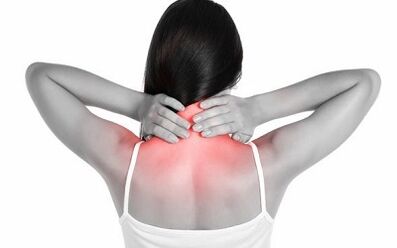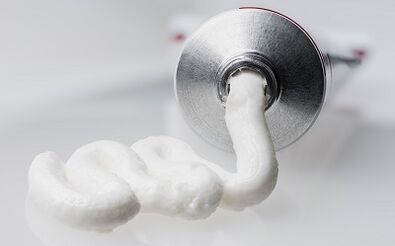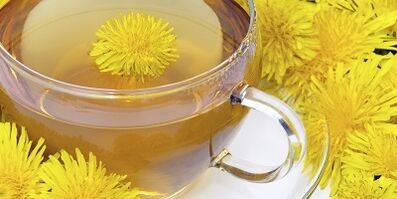For most modern people, a sedentary lifestyle usually leads to musculoskeletal diseases. One of them is cervical osteochondrosis. Recently, the disease has become much younger, and its symptoms often appear in people over 25 years of age. If left untreated, pathology can lead to dangerous consequences.
Pathological reasons

The main cause of cervical osteochondrosis is incorrect spinal load distribution. The factors that cause this situation may be different. Suppose a person is used to carrying a heavy bag on one shoulder, sleeping or sitting in the wrong position, etc. These factors may seem trivial, but if they act for a long time, they will lead to a completely logical consequence-cervical osteochondrosis.
The risk factors that increase the likelihood of pathology are as follows:
- overweight;
- Lack of physical activity;
- Spinal injury metastasis;
- Postural disorder;
- Foot pathology;
- The blood supply to the cervical spine deteriorates.
These reasons lead to the formation of incorrect vertebrae positions. The weight is unevenly distributed on the vertebrae, which is why certain parts of the cervical spine are subjected to excessive pressure. In response to this, organizational changes occurred.
The following factors can also make the situation worse:
- Transfer serious illness or injury, leading to physical failure;
- Constant pressure
- Metabolic disorders in the body;
- Insufficient use of trace elements, excessive consumption or insufficient intestinal absorption;
- Occupational diseases (especially vibration diseases);
- Genetic susceptibility to osteochondrosis;
- Scoliosis and other postural disorders;
- Failure to comply with the drinking regime;
- Improper nutrition;
- bad habits;
- Pregnant.
In most cases, SHOX will cause a series of factors. In its occurrence, the existence of lifestyle, general health and background pathology played a role.
Symptoms of the disease

Even at the initial stage, it can be identified by the following symptoms:
- Pain in the neck, back of the head, arms, and shoulders;
- Weakness of the upper limbs;
- Headache and crunch;
- General weakness and fatigue;
- Often dizzy;
- Lack of coordination;
- Tongue numbness, hearing and vision impairment.
The most common symptom is dizziness. It may be accompanied by:
- Tinnitus and noise;
- Migraine;
- Nausea and vomiting.
Patients often have headaches, especially women. Sometimes it manifests:
- anxiety;
- irritability;
- Constant mood swings;
- sleep disorder.
How to diagnose this part of the spine?
SHOX diagnoses by the following methods:
- Radiography. This method is not always effective, especially in the later stages of pathology.
- Nuclear magnetic resonance. It can see bone structure, hernias, their size and direction of development.
- CT. Computed tomography is not as effective as magnetic resonance imaging because it is difficult to determine the hernia and its size with this method.
- Ultrasonic double-sided scanning. If impaired arterial blood flow is suspected, use this method. Scanning makes it possible to assess the speed of blood flow and the presence of obstacles.
Features

This disease can progress in different ways. Sometimes it will compensate itself, sometimes it will deteriorate.
Together with the pathological process, it triggers the compensatory mechanism, prolongs the function of the vertebrae for a period of time and eliminates symptoms. But with the further development of the disease, it will cause the destruction of the annulus and the appearance of microcracks. The vertebrae lose their fixation and stability.
In addition, osteochondrosis is characterized by impregnating the pulp of the space between the vertebrae with calcium. In view of this, a hernia is formed because the affected vertebrae are pressed into the body of the person next to him.
Over time, the structure will wear out, leading to a large amount of ossification.
stage
The course of the disease is divided into several stages:
- Phase 1.Instability of the vertebral structure and disorder of the intervertebral disc.
- Stage 2.The fixation of the vertebrae is reduced, and the intervertebral disc is herniated.
- Phase 3.The annulus fibrosis is ruptured, the symptoms are obvious, and the pain is obvious.
- Phase 4.Difficulty in movement, severe acute pain, extensive bone tissue.
Due to the particularity of the position of blood vessels and muscles, the neck is a fragile part. With the long-term course of osteochondrosis, many complications will appear, many of which pose a serious threat to human health.
How to give first aid at home?
Treatment of cervical osteochondrosis at home includes:
- drug;
- physiotherapy;
- massage;
- Remedial gymnastics;
- Adjust your diet.
It is the combination of these treatment methods that can achieve good results in the treatment of cervical osteochondrosis. The symptoms of this disease can cause severe discomfort, so you need to know how to do first aid.
drug
Various drugs are used to combat the symptoms of the disease. They should be prescribed by a doctor who specializes in osteochondrosis-a neurologist or a chiropractor.
drug

- For severe pain, you can take painkillers. If they do not work, you can take non-steroidal anti-inflammatory drugs.
- Sometimes "distractions" are used, such as pepper stickers. It will not heal by itself, but it will heat up the inflamed area and relieve pain.
- For edema in areas of inflammation, herbal infusions and diuretics are useful.
For the treatment of SHOC, the following groups of drugs are prescribed:
- Non-steroidal anti-inflammatory drugs. Help relieve pain, swelling and inflammation of the affected nerve roots.
- Group B vitamins. They help to improve the metabolic process of nerve tissue.
- Cartilage protective agent. Promote the repair of cartilage tissue.
- Muscle relaxants. Helps reduce muscle cramps.
- Drugs designed to improve blood flow and blood rheological properties. They help to improve the blood flow to the brain and the nutrition of the affected nerve endings.
An intramuscular injection may also be required.
ointment

Osteochondrosis ointment helps to eliminate the uncomfortable symptoms at the beginning of the pathology. They are classified according to their effects on the body:
- Anti-inflammatory (medicine.The preparation contains non-steroidal anti-inflammatory substances, which help to eliminate pain and improve capillary permeability, reduce inflammation, swelling and redness.
- warming.This ointment has many contraindications, but in some cases they are very effective.
- Complex preparations.This group of methods relieve pain and inflammation, have anti-thrombosis and antibacterial effects. They immediately penetrate the joint tissue and normalize blood flow.
- Plant-based products.The advantage of this ointment is the natural nature of the composition. But you need to use them for a long time.
- Cartilage protective agent.This type of device protects cartilage tissue from negative factors. The ointment includes chondroitin and glucosamine. They activate the tissue repair process and reduce inflammation. It is recommended to use it 2-3 times a day and massage the neck area slightly before.
massage

Massage helps to strengthen muscle tone and relieve pain. The technique is selected according to the stage of the disease. But in most cases, all the techniques of classic massage are used: rubbing, stroking, kneading, etc.
- If the patient’s pain only occurs on one side, the massage starts from the healthy part and gradually moves to the place where the pain occurs.
- The first meeting should not exceed seven minutes. Then add 1-2 minutes to each program until the session time reaches 12 minutes.
- The patient should adopt a prone position, place the forehead on the cyst and arm, and extend the chin toward the chest. It is important to relax the neck muscles.
On their own
Massage can be done at home, but in this case, you need to be very careful not to cause more harm to yourself. SHOX's self-massage includes the following classic techniques:
- Stroking.The massage starts by touching the collar area from the lymph to the armpits and supraclavicular lymph nodes. Then finish stroking the plane and comb sequence.
- push ups.Place your hands on your neck and move down the spine. You can also push-ups with the edge of the palm facing the shoulder joint.
- wipe.Perform warm-up and relax muscles. The massage starts at the base of the skull. Use your fingers to make straight and circular movements. It is also possible to perform sawing with the palm of the hand parallel to the ribs.
- Kneading.The neck stretches in a circular motion.
- vibration.The massage ends with percussion and vibration by shaking and percussion.
physiotherapy
Therapeutic gymnastics helps to improve the patient's condition. But it is safest during the recovery period. During the execution, the patient should not feel pain and discomfort. These exercises are designed to strengthen the neck muscles.
Comprehensive exercise therapy

The gymnastics complex should be chosen by the doctor. The following exercises are helpful:
- In the prone position, you need to put your hands on the floor and slowly raise your head to keep your back and torso straight. At the top position, you need to stay for a few minutes and then return to the starting position smoothly. Do 2-3 repetitions.
- You need to take a lying position on your stomach and stretch your arms along the body. The head first turns to the left, then to the right. Try to touch the floor with your ears. Perform at least 6 repetitions on each side.
- In a sitting position, when you inhale, you need to bend over and touch your chest with your chin, and then when you exhale, lean back and tilt your head back. The number of repetitions is 10-15 times.
- You need to press the forehead with the palm of your hand and hold it against the forehead for 30 seconds. After repeating the exercise, put your hands together and press the back of your head. The number of repetitions is 2-3 times.
- The head rotates smoothly to the sides-10 times at a time. Avoid dizziness during this exercise.
Complementary therapy
Treatment can be supplemented by physical therapy methods and the use of various equipment such as massagers.
massager
Use a massager to help speed up recovery. It should be noted that they have many contraindications and can only be used with the permission of a doctor. For cervical osteochondrosis, it is often used to:
- Applicator
- Heated massager;
- Equipment for neck and shoulders.
Applicator

The applicator is a pillow or cushion with plastic or metal nails.
It acts on specific points in response to all biological processes in the body.
Using this product helps to achieve the following effects:
- Reduce or eliminate pain;
- Improve cell metabolism process;
- Eliminate joint tension and restore tone;
- Normalize sleep.
The device must be used in accordance with the instructions.
physiotherapy
Physiotherapy for SHH can indicate the following methods:
- Electrophoresis. . . Due to the influence of the current, it binds to the drug that immediately enters the desired area.
- Ultrasound.Relieves pain and inflammation, helps improve metabolic processes.
- Magnetic therapy.Relieve tissue swelling, thereby reducing pain.
- Laser Treatment.Eliminate inflammation and promote blood circulation.
Folk remedies
Time-tested folk recipes can be used as an additional treatment.
Kerosene compression
A hot compress with kerosene helps to relieve pain quickly.
- The cloth must be moistened with the solution and applied to the affected area.
- Put cotton or plastic wrap on it.
- Keep it for no more than three hours.
Rubbing from drug preparations
- You need to crush 5 tablets of Analgin.
- Add 15 ml of spinner, 0. 005 liters each of iodine and camphor alcohol, and mix everything thoroughly.
- The composition was rubbed into the neck area where pain was noted.
Pine bud infusion

In the case of cervical spine pain due to osteochondrosis, injecting pine trees into the kidneys can achieve long-term relief in the shortest time.
This medicine should be prepared in advance and taken for a long time, but the result will bring the long-awaited effect.
Prepare:
- The buds must be harvested before May. Cut them into rounds, put them in a glass container, and cover with sugar in a ratio of 1: 2.
- The drug should be infused for two weeks.
- You need to take 0. 0005 liters 3 times a day, hold it in your mouth for a period of time, and then swallow it.
The admission time is 2-3 weeks.
Mashed potatoes
- You need to mix 50 grams of grated raw potatoes with an equal amount of honey.
- Spread the composition on a piece of natural fabric and place it on the neck.
You can get rid of the pain in three days.
Radish sauce
- The radishes should be grated on a fine grater.
- Place the porridge between two thin pieces of fabric, put it around your neck, and wrap it in foil or parchment paper.
- As long as you have enough time and energy, you can keep it.
Honey bandage
- You need to mix 15 grams of honey and chopped salt.
- Apply the composition to a piece of natural material and place it on the affected area.
- Most importantly, you need to close it with paper and wrap it with something warm.
Repeat this process every night.
Acerola broth
- 250 grams of young pine or spruce needles should be poured into one liter of water.
- Cook for half an hour.
- The liquid is taken twice a day, 35 minutes after meals.
The course of treatment lasts for one month.
Dandelion Broth

The most important medicinal properties of dandelion are related to the content of inulin, a large amount of amino sugar, and natural rubber.
The plant is also valued for its glycosides dandelion, triterpene compounds, fatty oils, organic acids and alcohols, resin compounds, bioflavonoids, and many mineral compounds (including essential calcium) content.
Prepare:
- You need to grind the dandelion roots to make 15 grams of product.
- Pour it into 250 ml of hot water and place it in a boiling water bath for 15 minutes.
- The broth should be soaked for 55 minutes, then filtered and added water until it regains its original volume.
- Take 75 ml 3 times a day before meals.
Ginger paste
- Grate the ginger root and weigh about 55 grams.
- Add 30 ml of soft butter and 3 cloves of garlic.
- Apply the medicine to the affected area to warm it up.
Mustard Egg Mix
You need to mix:
- 50 grams of mustard powder;
- 3 egg whites, beat up;
- 50 ml camphor alcohol;
- 59 ml of vodka or medical alcohol.
The product is soaked in the dark for 10-12 hours.
To prepare the second mixture, you need to mix:
- 100 grams of honey;
- 50 grams of aloe vera juice;
- 150 ml of vodka or diluted alcohol.
The composition was left in the dark for 12 hours.
The funds are used twice a day, applied to the affected area and left there until dry. It is recommended to combine them until they are used up. The 12-day course will help you forget the pain within a few months.
What should I do if I have severe pain?

- For severe pain, you can take anesthetics or non-steroidal anti-inflammatory drugs. The ointment can take effect quickly.
- Need to provide peace for the affected sectors.
- Hot compresses or conversely cold compresses can also help. In this case, moderation is important so that the effects of low or high temperatures do not increase pain and swelling.
It should be noted that the treatment of osteochondrosis should be carried out comprehensively.
First, you should eliminate all pain in the neck and head, and eliminate the root cause of the discomfort.
If the patient treats extremely severe pain, it is impossible to get rid of the main problem.
Dizziness relief
- When dizziness occurs, the patient must lie down or sit down to relax the neck as much as possible.
- In the event of fainting, place the patient in a horizontal position and lower his head.
Drug help:
- Muscle relaxant
- Vasodilator
- Anti-inflammatory and analgesic drugs.
Gymnastics and physical therapy can also be used to treat vertigo.
Prevent deterioration
To prevent deterioration, it is important to comply with the following recommendations:
- Moderate exercise is helpful. They help improve blood circulation and lymph flow in the territorial area, improve the mobility of the vertebrae and prevent degenerative changes.
- Nutrition plays an important role. No special diet is required, but it is recommended to limit the use of salty and spicy foods, sugar, and foods containing artificial ingredients. The diet should contain enough protein, vitamins, minerals and plant fiber. Drinking plenty of water is also very important.
- It is necessary to receive regular examinations by orthopedic doctors.
- If you have excess weight, you need to get rid of it.
- When handling heavy objects, the load needs to be evenly distributed.
- People who work at the computer should warm up regularly.
- It is important to control your posture and try to avoid stress, injury and hypothermia.
Advice from doctors and patients

Experts and patients with cervical osteochondrosis also provide the following suggestions:
- For acute pain, do not self-medicate. It is necessary to consult a doctor as soon as possible, and the doctor will formulate a comprehensive treatment plan according to the specific situation.
- You should not try to correct displaced vertebrae yourself and take a lot of pain medicine. Self-medication will only aggravate the condition.
- An important measure for the deterioration of osteochondrosis is exercise status. In the first few days, rest and exercise restrictions are required, but in the future, exercise activities should be expanded. Special exercises are very helpful.
- Quitting smoking is very important. This applies to the treatment and prevention of diseases. Due to the influence of cigarette smoke, blood vessels are affected, blood circulation deteriorates, and metabolic processes slow down. Therefore, the risk of degenerative disease in various parts of the spine increases.
The symptoms of cervical osteochondrosis are very unpleasant. If they suddenly appear and cause severe discomfort, you can take first aid measures, such as taking painkillers or using folk remedies. But it should be understood that these methods can only alleviate the condition, but cannot cure the disease. To get rid of osteochondrosis, you need to see a specialist and follow his prescribed complex treatment plan.

























